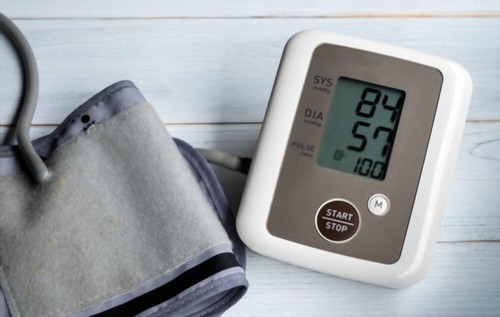Blood pressure is the force of the circulating blood on the walls of the arteries. It is measured in units of millimeters of mercury (mmHg), using a device called a sphygmomanometer, and is done in two parts: systolic (as the heart beats and the force is at its highest), and diastolic (between heart beats when the heart is resting and the force is at its lowest). A normal reading is less than 120/80 mmHg.

Having a naturally low blood pressure (generally as being lower than 90/60 mmHg) may be normal for you and does not generally mean there is anything wrong with you. In fact it can be beneficial as it can reduce the chance of coronary heart disease and stroke, and so is only considered a problem if it causes symptoms such as dizziness, lightheadedness, and fainting.
Hypotension, or low blood pressure, is particularly prevalent in older adults who are frail or bedridden. It is also fairly common in certain groups of people, whose blood pressure may drop for different reasons, defined as: orthostatic hypotension (low blood pressure on standing, common in pregnant women and older adults); postprandial hypotension (low blood pressure after eating, common in older people); neurally mediated hypotension (low blood pressure from standing too long, often experienced by children and adolescents who generally outgrow this condition).
A sudden change to blood pressure is often the result of another medical condition, so the blood pressure is not being properly controlled. 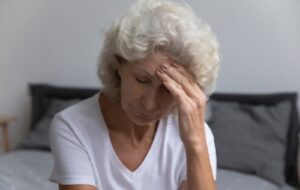 These can include: heart problems including tachycardia (a fast heart rate) and bradycardia (a very slow heart rate), liver disease, hormonal or vitamin deficiencies, dehydration, pregnancy, certain medications, hypoglycemia (low blood sugar), diabetes, electrolyte deficiency, particularly sodium (salt), blood loss or blood infection, thyroid problems, severe changes in body temperature, and extreme emotions such as pain or fear.
These can include: heart problems including tachycardia (a fast heart rate) and bradycardia (a very slow heart rate), liver disease, hormonal or vitamin deficiencies, dehydration, pregnancy, certain medications, hypoglycemia (low blood sugar), diabetes, electrolyte deficiency, particularly sodium (salt), blood loss or blood infection, thyroid problems, severe changes in body temperature, and extreme emotions such as pain or fear.
Symptoms can include dizziness, lightheadedness, fainting, nausea, cold and clammy skin, cold hands and feet, ringing in the ears, heart palpitations, pulsating headaches, confusion, blurred vision, fatigue, and quick, shallow breathing. These symptoms can occur suddenly or progress over time.
A sudden dramatic drop in blood pressure can lead to shock which can be fatal. It is the most severe form of hypotension, and can cause blood pressure to drop to dangerously low levels, depriving the brain and organs of enough blood to function, and can result in stroke, heart attack or kidney disease.
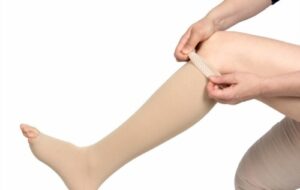 Changes to the diet and lifestyle can help to control symptoms, and include: rising slowly after periods of sitting or lying down; eating small, low-carb meals several times a day, and avoiding a large meal filled with carbohydrates; taking deep breaths before changing position; increase fluid intake to increase blood volume; increase moderate intake of tea and coffee, slightly increase salt intake; since caffeine can stimulate the circulation, raise the heart beat and temporarily increase blood pressure; do not sit with legs crossed; and wearing compression stockings (to reduce the pooling of blood in the legs).
Changes to the diet and lifestyle can help to control symptoms, and include: rising slowly after periods of sitting or lying down; eating small, low-carb meals several times a day, and avoiding a large meal filled with carbohydrates; taking deep breaths before changing position; increase fluid intake to increase blood volume; increase moderate intake of tea and coffee, slightly increase salt intake; since caffeine can stimulate the circulation, raise the heart beat and temporarily increase blood pressure; do not sit with legs crossed; and wearing compression stockings (to reduce the pooling of blood in the legs).
With more severe cases, medication may also be prescribed to increase the retention of salt, or to make the veins constrict. Overall low blood pressure is not considered dangerous unless it drops to an extreme low for which there is usually a trauma of some type involved.
Hypotension is preferable to hypertension (high blood pressure) which is extremely detrimental to the health. Low blood pressure is often more of an inconvenience, but can affect quality of life for instance with constant dizzy spells , but with the right remedies it can be managed.
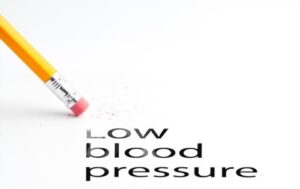 If you are looking for a home remedy to help increase your blood pressure naturally in order to help alleviate some of the symptoms associated with hypotension, then essential oils may be able to help. They can be utilised with the use of a diffuser, or as a massage (5 drops of oil mixed with 20ml of a carrier oil), combined with gentle regular exercise to improve the general efficiency of the circulatory system.
If you are looking for a home remedy to help increase your blood pressure naturally in order to help alleviate some of the symptoms associated with hypotension, then essential oils may be able to help. They can be utilised with the use of a diffuser, or as a massage (5 drops of oil mixed with 20ml of a carrier oil), combined with gentle regular exercise to improve the general efficiency of the circulatory system.
Rosemary Essential Oil
Rosemary essential oil can help to stabilise blood pressure to a more normal level. It contains camphor which can help to stimulate the respiratory system and promote blood circulation. Early research has shown that using rosemary oil three times a day increases both the systolic and diastolic blood pressure temporarily in people with low blood pressure, ie. The blood pressure returns to pretreatment levels when the use of rosemary is stopped.
Please note that rosemary essential oil is not recommended for pregnant or nursing women.
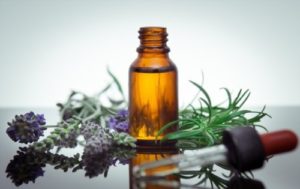 Lavender Essential Oil
Lavender Essential Oil
Like rosemary essential oil, lavender contains camphor which can have a stimulating effect on the body and increase blood circulation when applied topically even in low concentrations.
Peppermint Essential Oil
Although peppermint essential oil has no effect on low blood pressure, it can be a helpful oil to have at hand if fainting, dizziness or nausea is a frequent symptom.
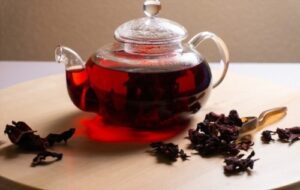 It is also believed that drinking hot hibiscus tea (karkade) can also help to higher blood pressure. Please note that it must be hot, as cold karkade tea will lower blood pressure. This tea is pleasantly refreshing, with a range of health benefits, so try some today.
It is also believed that drinking hot hibiscus tea (karkade) can also help to higher blood pressure. Please note that it must be hot, as cold karkade tea will lower blood pressure. This tea is pleasantly refreshing, with a range of health benefits, so try some today.
Remember that essential oils are only a complement to existing treatments, or to help with minor symptoms. If symptoms deteriorate, schedule an appointment with your physician immediately to rule out any underlying health issue.
